
The mobile app industry is thriving with increasing numbers, and almost every business is channelizing this technology to garner maximum revenue. However, the boom in the mobile app industry has also brought tight competition.
As of March 2018, the Google Play Store is home to 3.6 million, and the Apple App Store comprises around 2 million apps. It makes the industry competition hotter than ever.
To be noticed, the App Store Optimization (ASO) is the necessary step for your app. Most of the users still search for the new apps to download via store browsing, so it is mandatory to increase visibility.
In other words, the total number of app downloads in the app stores directly impacts the visibility factor of the application. It is the part where critical measures are required to help the app developers in boosting their app downloads.
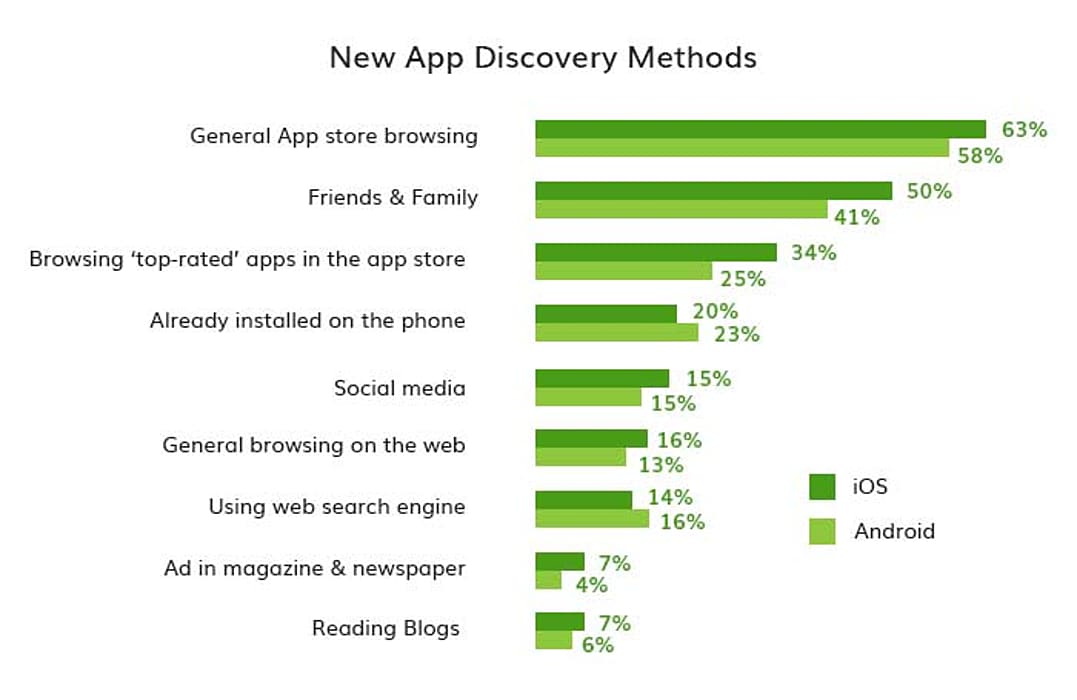
Credit - Apptentive
Users exploring the new apps are more likely to depend on store recommendations as they genuinely trust the results. According to Apptentive, 63% of the users have reported that they prefer the app store browsing for over other channels.
According to Ankit Jain, the Head of Search and Discovery at Google Play Store, out of all the daily active users (DAU), 12% try store browsing daily. He also mentioned that 50% of these DAUs look for the new apps in the store once a week.
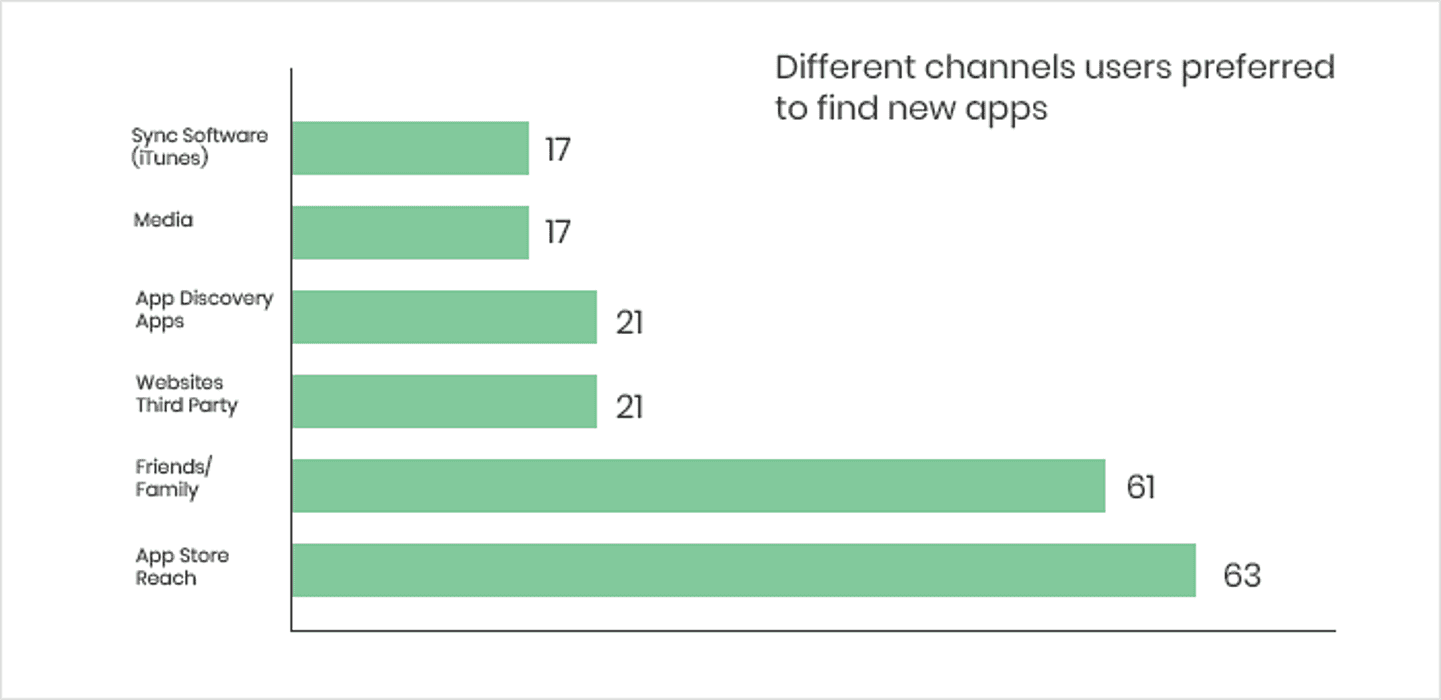
Credit: Nielsen
In addition to this, the survey of the Nielsen also overlaps with the Apptentive stats and shows that the store is the primary source for finding the new apps.
However, even after understanding the importance of the app store optimization, most of the app owners and developers failed to implement it correctly. This happens because they got tangled with the myth that is being associated with the app store optimization tips.
Yes, there are some of the misconceptions that are going around the industry and restraining the apps from getting better rankings in the store.
It is a highly concerning matter, and you need to make your strategy clear off these app store optimization myths right now. So, if your basics are clear and you know ‘what is app store optimization’ then let's proceed with the myths:
1. Changing The App’s Name Will Help In Getting Better Ranking
Myth busting: App’s name is crucial, but you need to select one and stick to it.
First, let us clarify the fact that the app’s title or name is the most important thing you need to take care of. Moreover, it is the best spot to place your keywords for store algorithm to scan it, which Mr. Jain also mentioned during this year’s Google I/O event.
Now, coming to the myth, many of the search optimization experts believe that changing the name of the app frequently by adding or changing keywords will help it to get better ranking in the store.
Here, we suggest app owners also to get familiar with the techniques of growth hacking and how it can be used to increase the number of app downloads.
Apart from that, it is not assured that changing the name of the app will turn out to be a highly useful tactic for the app’s visibility. But sometimes including high-ranking and primary keywords can provide a significant impact on how the app is displayed in the search results.
Instead, if you change the name, the users who already knew your app won't be able to find it again or unable to recommend it to their friends or family. It is highly advisable to find a suitable name with the best keyword and stick with it without making changes.
Main Tips You Should Remember
Below are some tips that you cannot afford to miss when it comes to optimizing your app according to the Google Play Store or Apple App Store:
- Make it shorter: You should be giving a more concise title to your app that can be readable to the users at one glance. Try to fit the title under 25 characters as the store chops the name beyond this limit and readers won't be able to see the entire name.
- Say no to lengthy names: the In below screen, you can see that the app uses a lengthy name and only a few words are visible so, the users are less likely to download it.
- Try to be creative with the name: With adding creativity, you need to avoid the generally categorized words like the game, note, photo, and others. The simple and unique name will help the user to spot your app in the crowd and remember it in the future to suggest to their friends.
For example, the WhatsApp and Flappy Bird are navigational searches, and if these were given names like messaging apps or bird games it would have been very tough to catch the user's attention.
2. Only Rating Makes The Tame
Myth busting: Ratings are necessary, but not as much as you might think.
This is among the most influential myths of all, and it is no surprise that most of the developers to consider the ratings the most critical factor of ASO. I agree with that, the ratings are important, but they are not that much significant as people think.
However, the rating inevitably affects the ranking as someone after using your app, giving it five stars will plainly put your app in a better ranking than the one-star app.
But the rating isn't the number one factor in improving the ranking and the store visibility of an app. We know that you might not be convinced yet about the ranking, but we have reports backing up our words.
Inside Mobile Apps has also taken the initiative to clear this myth with its reports. The company has conducted a study on the terms including easy search keywords, medium search keywords, and high competition search keywords to find out the truth of ratings.
The graph below from the study shows the results for iOS and Google Play Store that reveals how ratings affect the ranking. You can see that the lines are getting deviate downwards from the 8th position proving that the ratings are ineffective for the top positions.
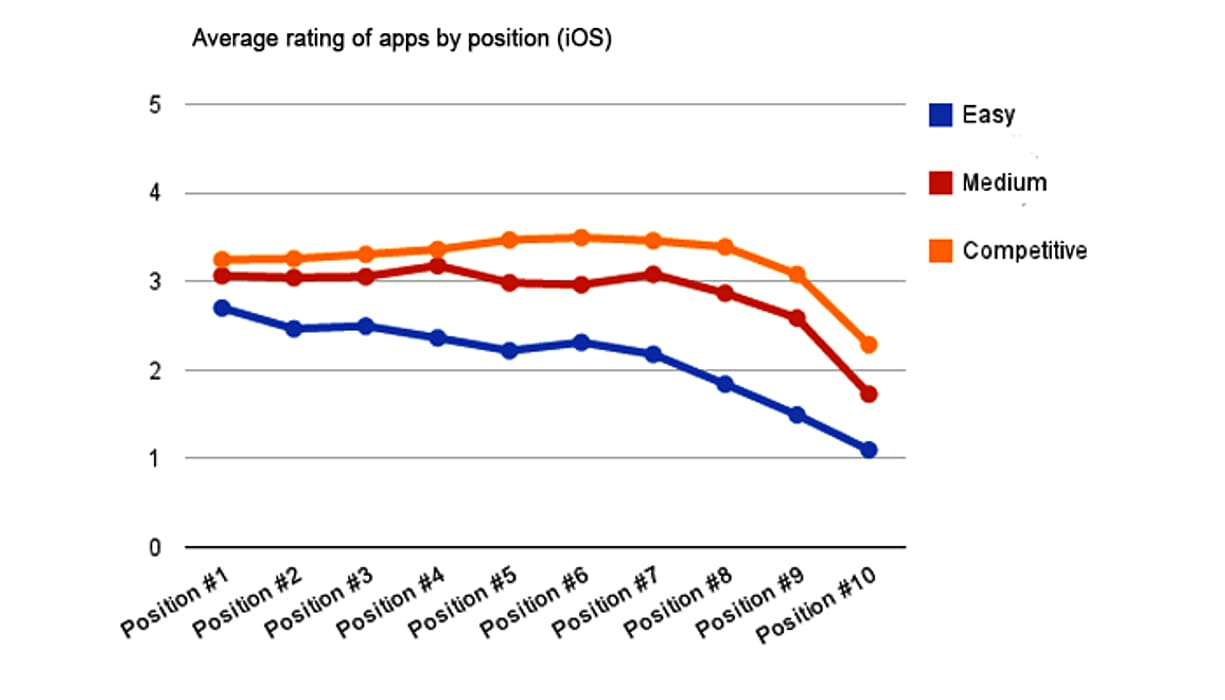
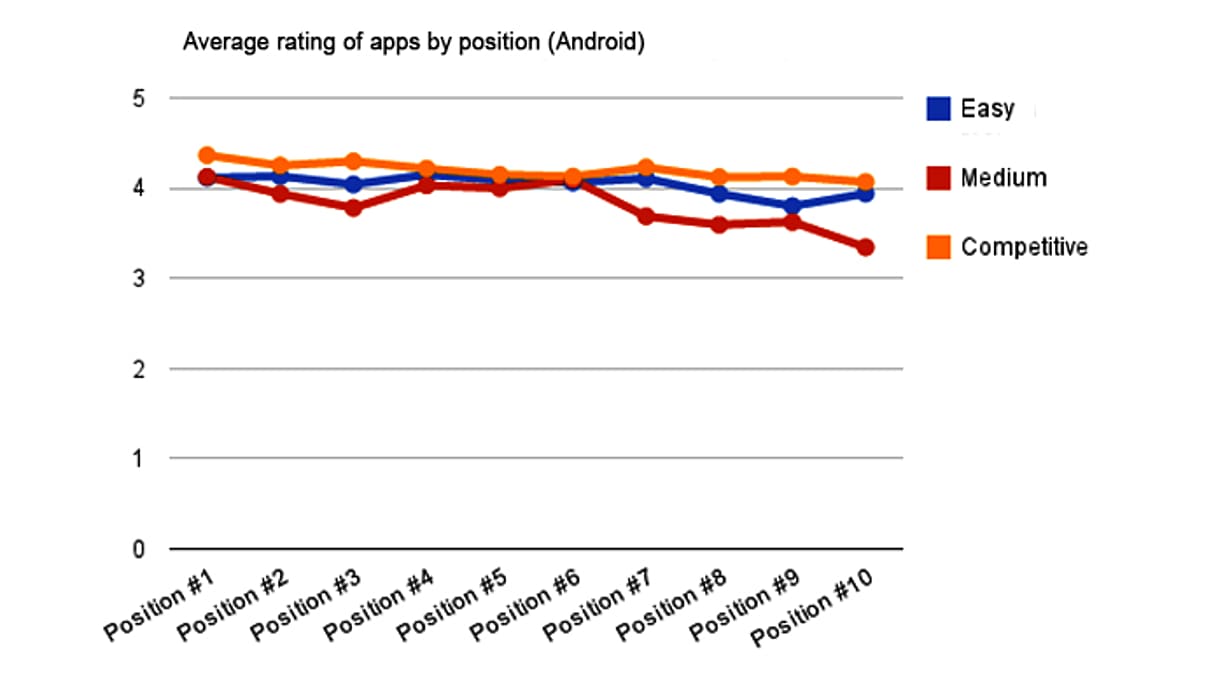
The study also concluded that the rating for the 10th position app could be as low as 1.09. This makes it clear that the ratings didn't have as much control over the ranking algorithm in the store as you believed until now.
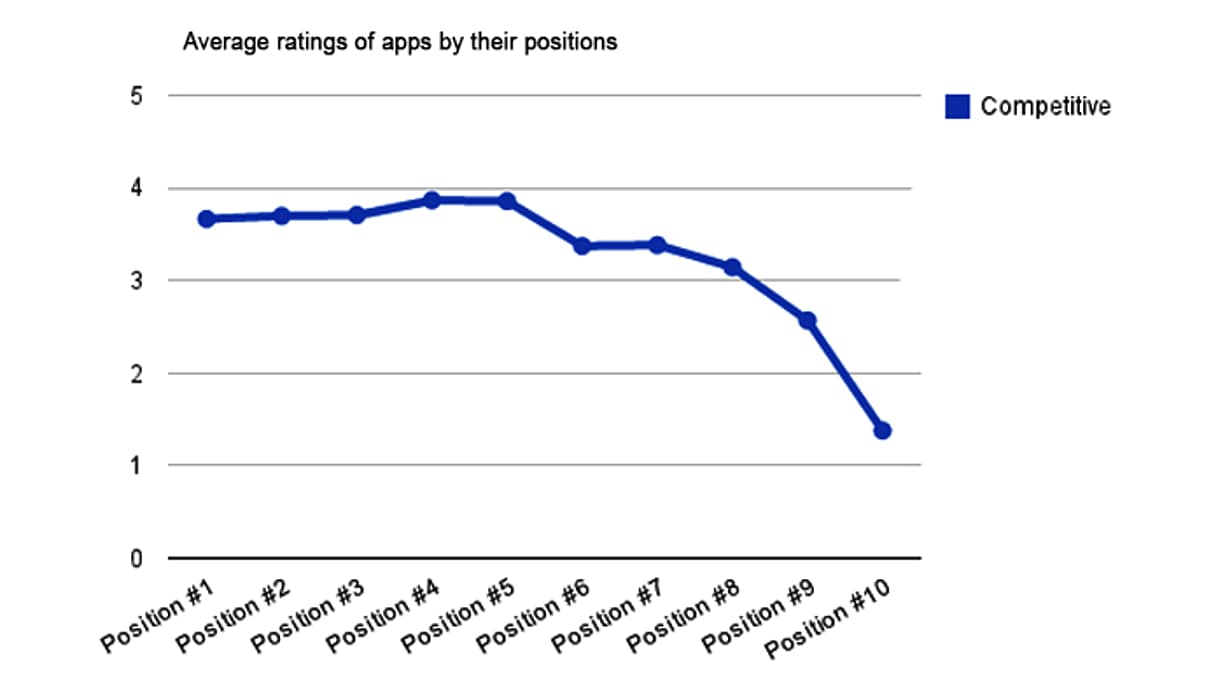
If you still need some more proof to kick this app rating myth out of your head, you can see this graph of the top ranking apps on the chart. Even these top-ranked apps are backed up by good ratings, so give rating importance as much as it deserves not blindly depend upon them for ASO.
In addition to this, we have also written a detailed article featuring all the not-so-famous app store optimization tips that might reveal some great insights to you.
3. Keywords Don't Matter That Much
Myth Busting: Keywords play an essential part in app store optimization.
As far as the myth about the keywords goes, the people believed that it is vital for SEO, but not for the app stores. ASO is all about the ranking and doesn't count on the keywords like SEO.
If you are among those people, then we are sorry for bursting your bubble of trust on this myth. The keywords are also crucial for app store optimization; they play an essential role in uplifting the app’s ranking.
The developers need to place specific keywords in the app to make it searchable for the users. However, the keyword stuffing will get you in trouble, so you need to play it smartly.

The keywords can also be placed in the app title also which will help your app in getting better visibility. However, don't fall for the general words and try to come up with the great combination of a unique name having a keyword in it.
You can see the truth by yourself with the help of the below graph, which shows that the app with keywords owns a 10.3% higher ranking with keywords included.
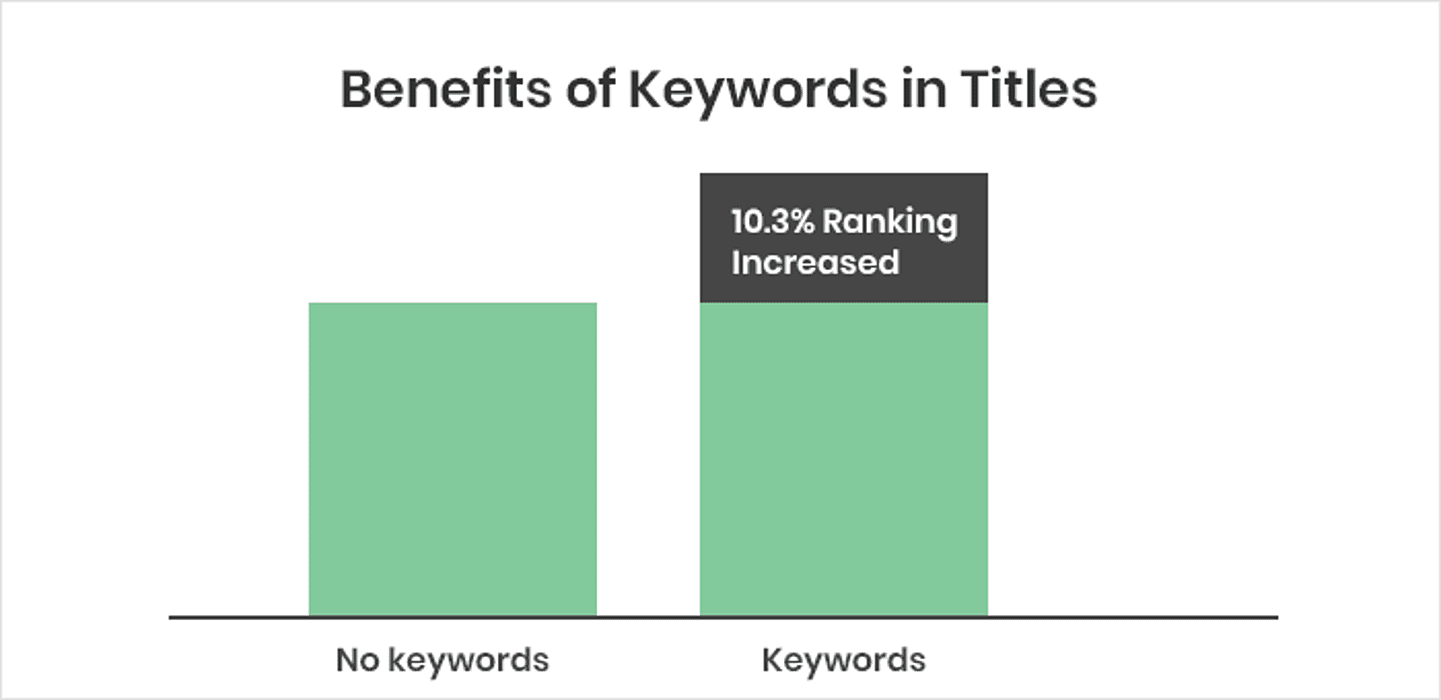
Tips for Keywords
-
Try to include the keywords that are relevant or describe the app’s functionality for giving it a unique name. Go for the keywords with the low competition in the store initially as it will be beneficial for you.
-
Try avoiding the keyword stuffing as this won't give any benefit to your app, instead you will be punished by the store algorithm.
-
You will get a description in both the Google Play Store and Apple App Store with your app to place the keywords. Sprinkle the keywords with a logic all over the description.
4. Being In-App Store Is Enough And Downloads Doesn't Make A Huge Impact
Myth busting: You need to put in extra effort to compete with millions of apps.
This myth is restraining so many apps with great functionalities and unique ideas from being successful. Many people do believe that after developing an app and successfully submitting it to the stores their job is done. According to the myth, the users will find it by themselves and download it to generate revenue for developers.
Let me put it this way, Google Play Store has 3 million apps, and the Apple App Store has 2.2 million apps competing with each other. It makes it almost impossible to get noticed without making any effort.
The effort is called ASO, which helps you to move up in the ranking ladder to get more downloads and higher rankings.
Consider the blogs on the internet, if you don't put keywords in it and don't take the proper SEO steps, it's never going to get a better ranking on the search engine. Similarly, goes with app store optimization, you need to take steps to influence your downloads and visibility for your app to become popular.
Along with this the developers also believe that the number of downloads does not influence the ranking that much. But, fortunately, the downloads are directly proportional to the ranking of your app in the store. In fact, the number of people using your app will directly increase the ranking.
To help mobile app marketers, our team of experts released a well-researched guide mentioning all the pre as well as post-release mobile app practices. The main aim here is to help app marketing professionals by assisting in the complete app development journey.
The study also shows how the increasing number of downloads pushes the ranking to a higher position. You can see that the graph is showing that the apps are getting a better position in the store with an increasing number of downloads.
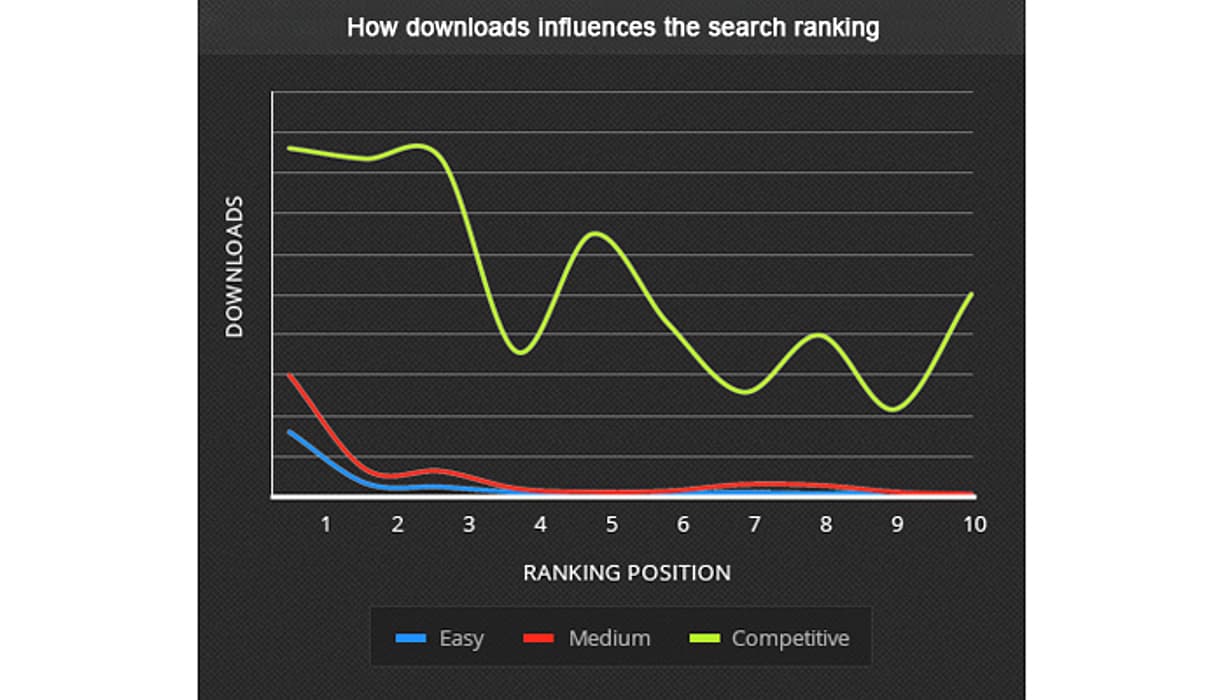
The number of downloads depends on two things one is the service quality, and the other is marketing. The first one is something that you need to take care of the app development, whereas the app marketing needs to be done until it becomes globally recognizable.
To do so, you must break the chain of traditional marketing strategies by focusing on different channels like organic source, social media, and PPC to generate more downloads.
Once you start getting the exponential download growth for your app, you will also experience a sudden increment in the ranking.
Take the example of the apps like Sarahah that made news overnight and topped iOS charts by claiming the first spot, that happens because of the app getting viral and so many people were downloading it in a short period.
5. App Description Don't Matter
Myth busting: App description plays a vital role in app store optimization.
During my research, I have found many ASO experts and mobile app industry people claiming that the description isn't that important. According to them, the description of the app doesn't help much in making the app’s ranking better.
However, I disagree with all those claims and suggestions. According to my research, the description holds equal importance in the app store optimization strategies for improving the ranking as factors do.
According to ASO, we need to put keywords in the app store, so the algorithm of the store can detect the app easily to include it in the search results. This means the keywords need to be included in the content, and the description is the only place where you can embed enough keywords.
Major app stores like Google Play Store and Apple App Store both consider the description of the app while analyzing the keywords; however, both of them use a different approach to scan the keywords.
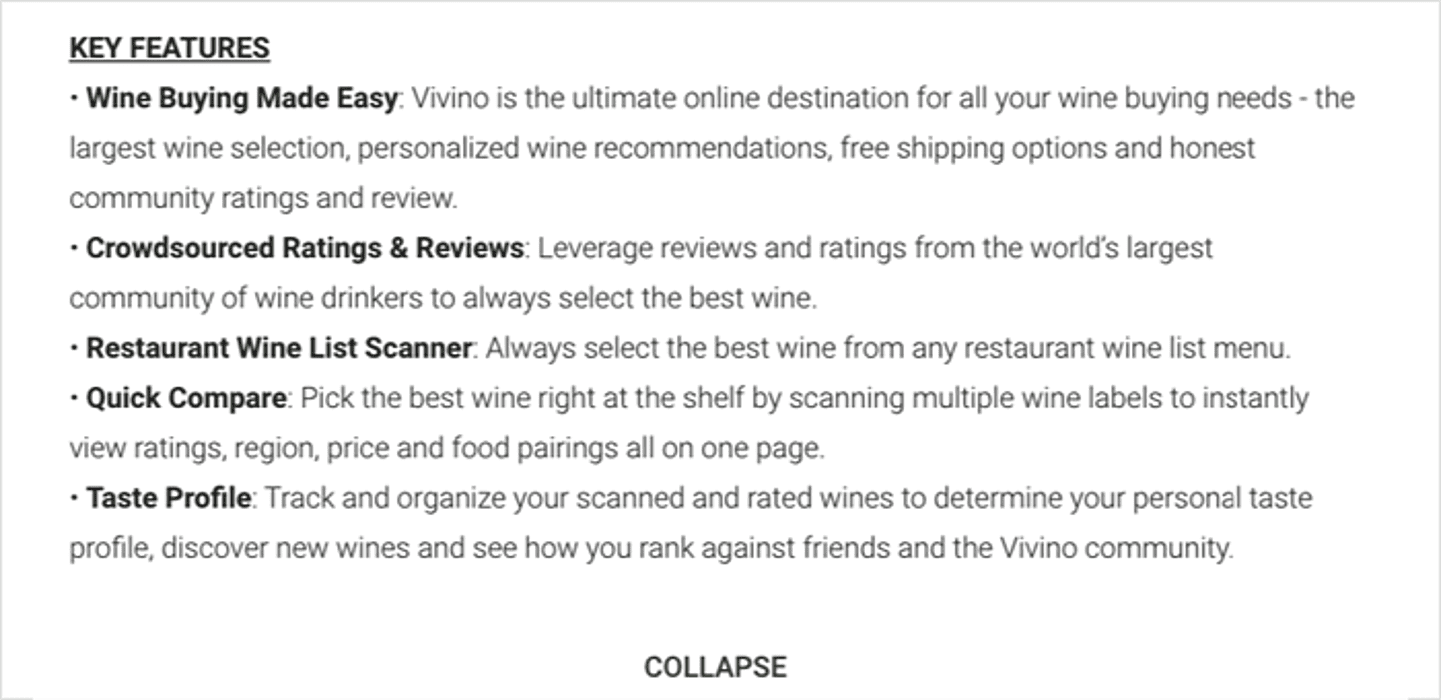
In case we put the keywords fact aside for a while and consider that description does not influence the ranking, we still have a point to prove this myth wrong. Once the user is noticing your app it is much less likely for the user to install it by without knowing about it.
The description of the app will be responsible here for convincing the user to hit the install button. If you keep on being a believer in this myth then your description will lose the user, on the other hand, the well-written description with the alluring offerings will capture the user's interest in installing the app.
MobileAppDaily Suggestion - Bonus Myth
The Same strategies will work on the Google Play Store and Apple App Store
It isn't a myth, but more of a minor detail that most of the developers overlooked. Both the stores have a different approach towards the apps, and you need to work according to that. However, the basic parameters of the ASO will be the same as keywords, title, and description, but their way of implementing should be according to the respective app store guidelines.
For example, the Apple App Store only allows the placement of the keywords up to 100 characters. On the other hand, Google Play Store uses a different approach for the keywords and offers 400 overall characters for the description and let you place the keywords wisely, similar to its web search engine algorithm.
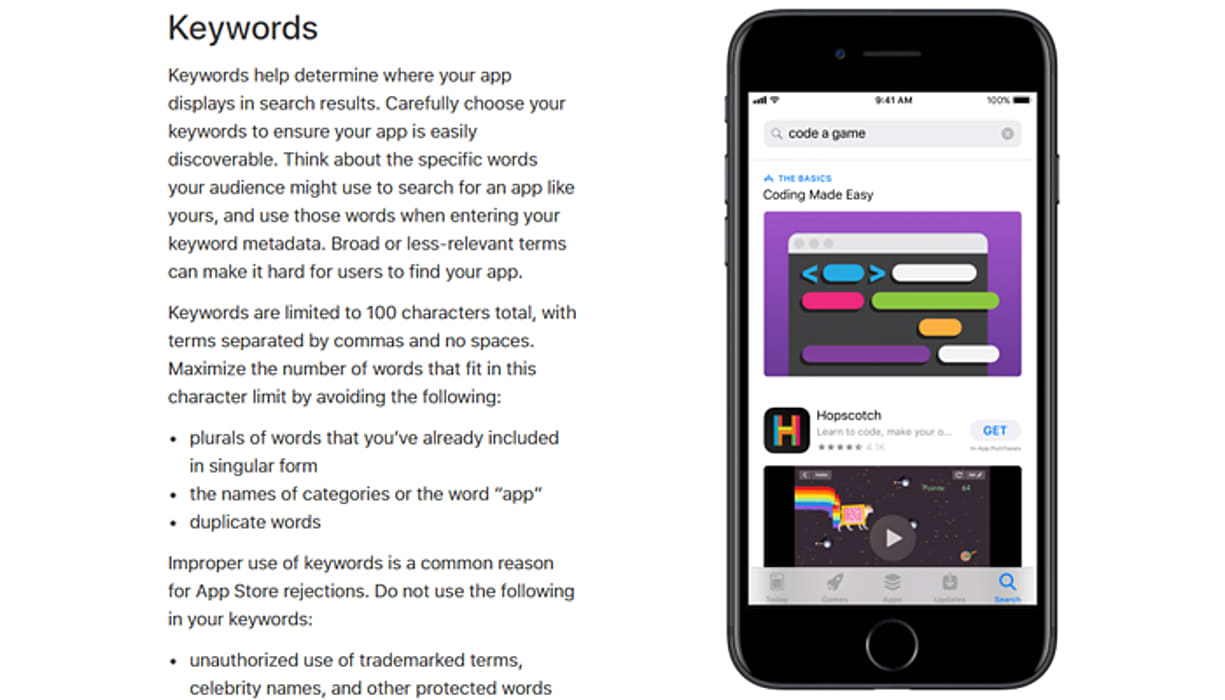
To acquire the best results, you need to apply the strategies that have been tailored according to the respective app stores. Apart from this, there are many other promotional strategies that you can opt for mobile applications.
For instance, app developers can connect to a trusted mobile app reviewing platform where they can get their Android and iOS mobile apps reviewed by experts in their respective fields.
And, if you are interested in reading more about the latest updates on topics like ‘app store optimization checklist’ straight from the mobile app industry then make sure to follow MobileAppDaily by clicking on the ‘Subscribe’ button now!










